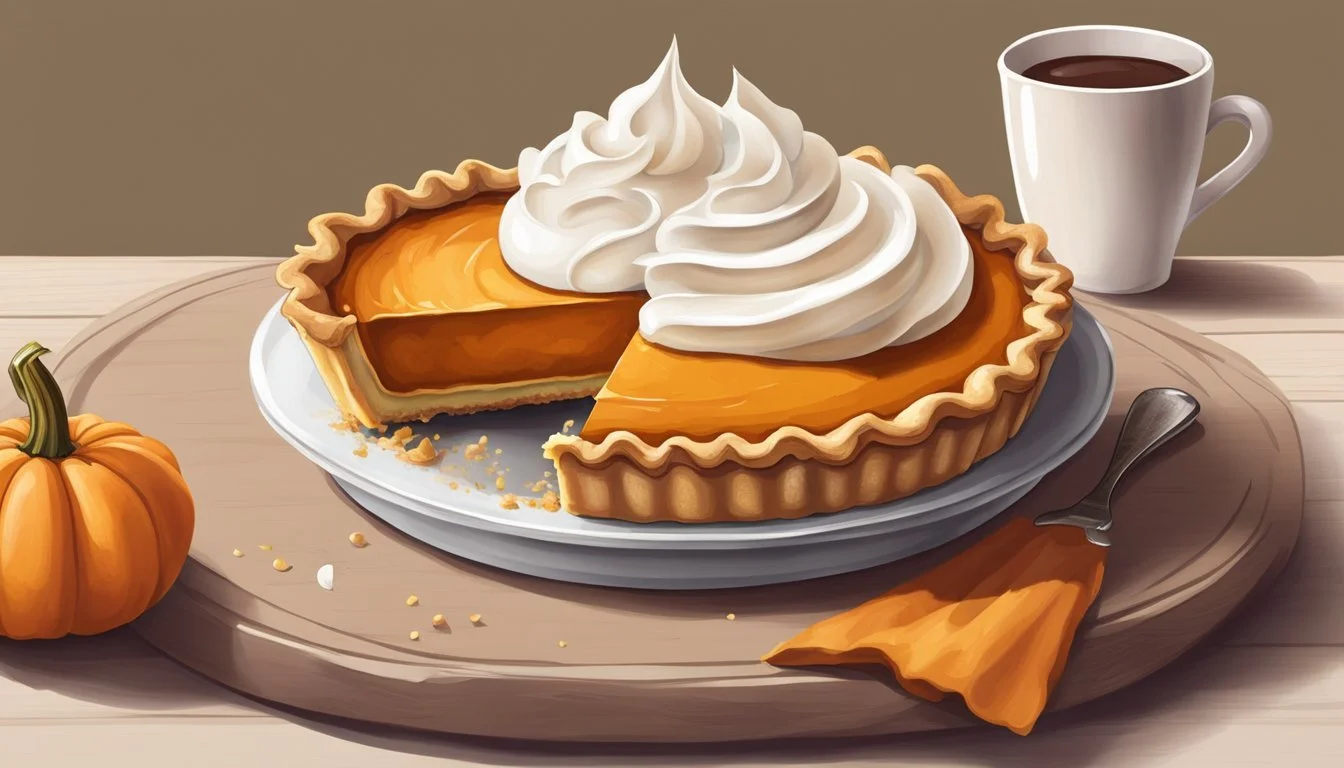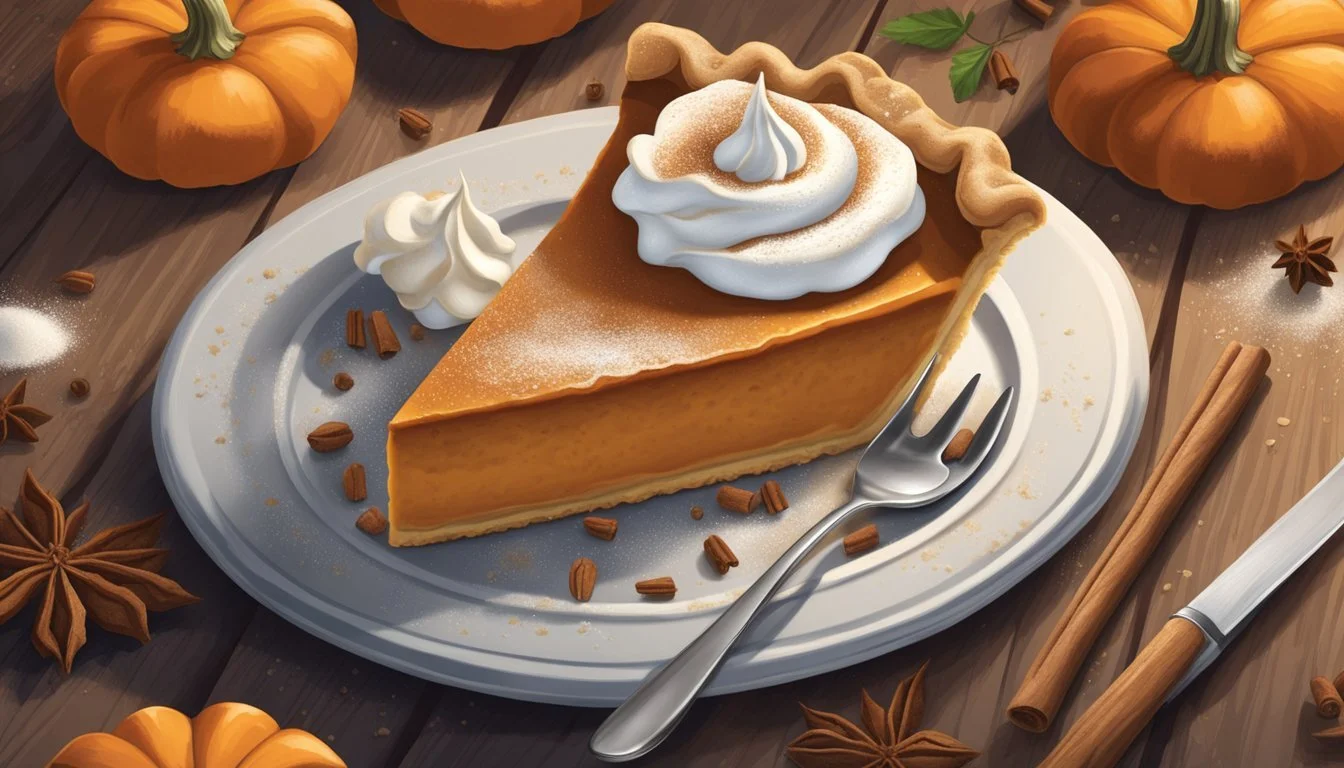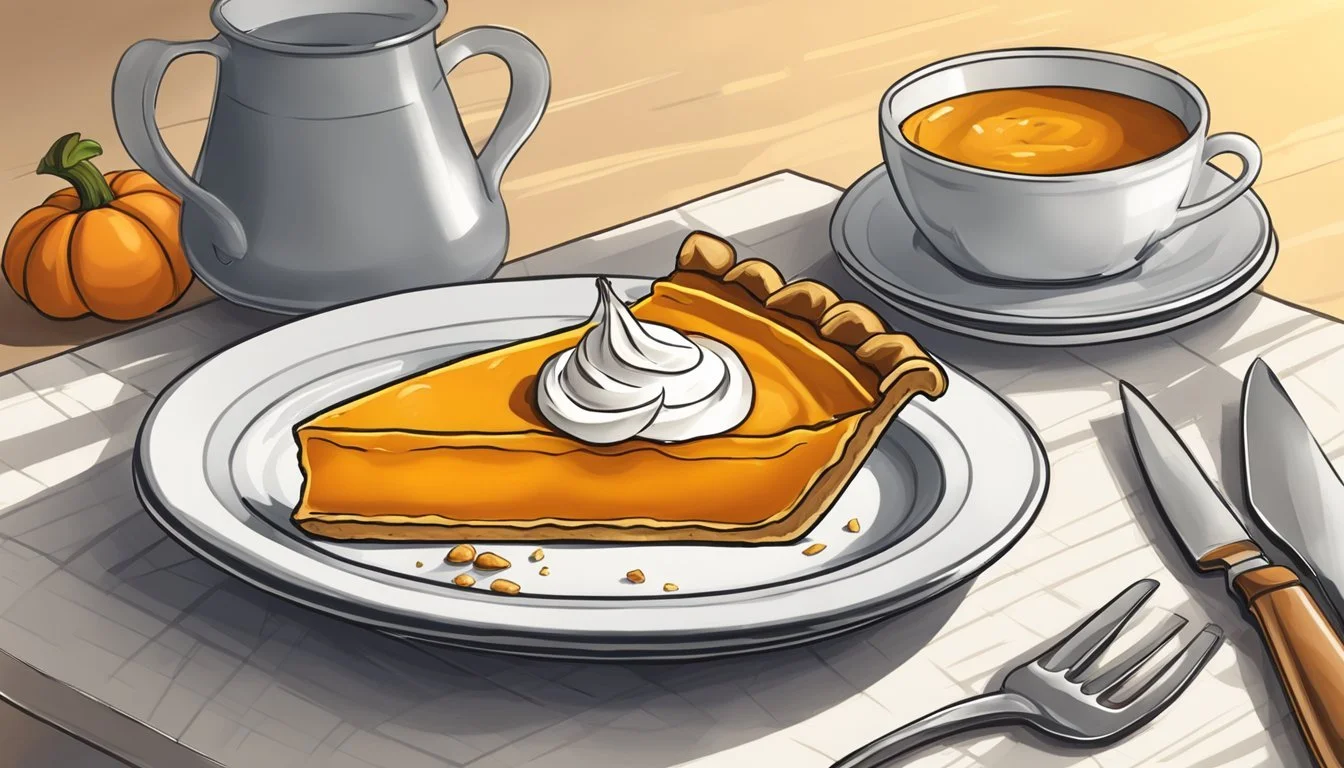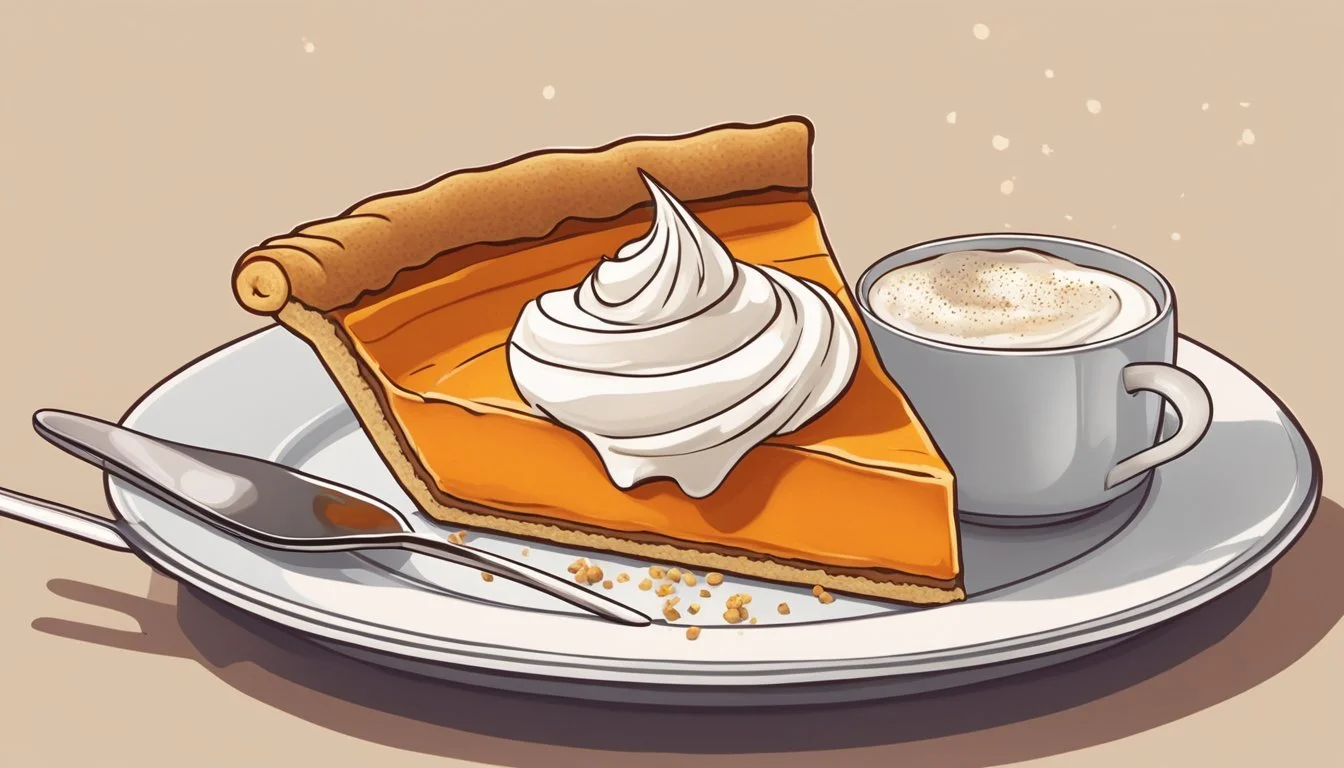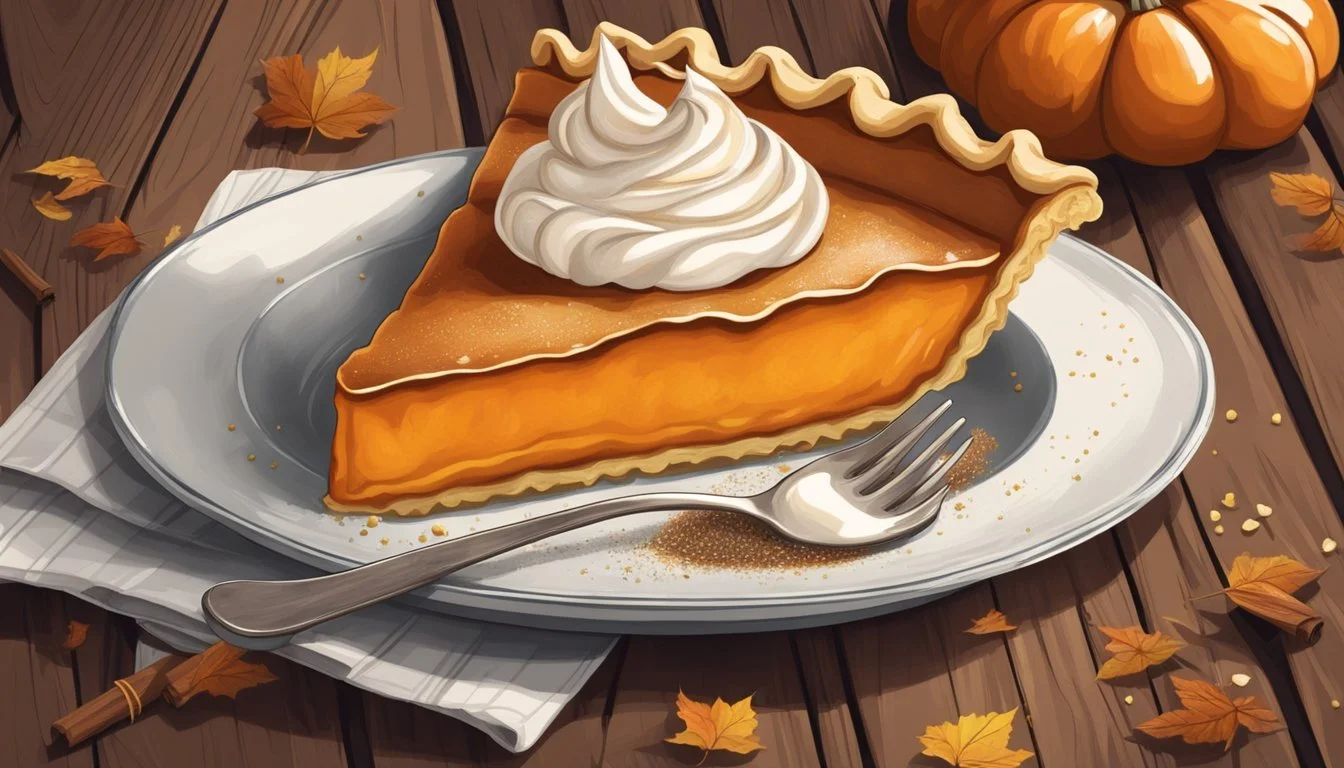How do you eat a pumpkin pie?
Mastering the Art of Enjoying This Fall Dessert
Pumpkin pie is a quintessential dessert that encapsulates the essence of fall and the festive spirit of holidays like Thanksgiving and Christmas. To savor this classic treat, the options for how one eats pumpkin pie are as varied as the individual preferences for its accompaniments. The pie can be enjoyed warm or cold, with both temperatures offering a different but delightful sensory experience. When served warm, the pie's spices are more aromatic and the filling softer, creating a cozy, comforting dessert. On the other hand, chilled pumpkin pie presents a firmer texture that can be particularly refreshing.
The garnishes and toppings for pumpkin pie also cater to a wide range of tastes. A dollop of whipped cream (how long does cream last?) is traditional, complementing the pie's spices and sweetness with its light and airy texture. For those averse to whipped cream, alternatives like a scoop of vanilla ice cream or a drizzle of maple syrup can add a twist to the classic serving method. Meanwhile, textural contrast can be achieved by sprinkling toppings like chopped nuts or granola, which introduce a satisfying crunch.
One must consider the personal and cultural preferences that influence how pumpkin pie is best enjoyed. While some purists might insist on the simplest form, room temperature with a squirt of whipped cream, others encourage culinary creativity, suggesting the pie can be a canvas for flavors like caramel, pecans, or even a splash of bourbon. The key to eating pumpkin pie is to cater to one's taste palate while respecting the pie's core characteristics—a silky custard filling spiced with cinnamon, nutmeg, ginger, and cloves, cradled by a flaky crust.
Pumpkin Pie Basics
When discussing pumpkin pie, it addresses a fall favorite often associated with Thanksgiving and winter gatherings. It's a dessert that hinges on the harmony between its filling and crust, each requiring specific attention for the perfect pie.
Understanding Pumpkin Pie
Pumpkin pie is essentially a form of custard pie made with a smooth, spiced pumpkin-based filling. The classic recipe includes canned pumpkin puree or fresh pumpkin that has been cooked and mashed, mixed with eggs, granulated sugar, and milk or condensed milk for richness. Pumpkin pie spice, a blend including cinnamon, ginger, nutmeg, and cloves, imparts the quintessential warm flavors typical of the holiday season.
The Importance of Pie Crust
The crust serves as the foundation that holds the filling. A well-made crust should be flaky and tender, providing a delicate contrast to the velvety filling. Recipes may call for store-bought or homemade crusts, often pre-baked to prevent sogginess. For the pie dough, a mixture of flour, fat (like shortening or butter), and water is used, with some opting for a touch of light brown sugar for subtle sweetness.
Pumpkin Pie Filling Characteristics
The filling's texture is paramount; it should be smooth and custard-like, without any cracks or weeping. To achieve this, a balance of wet and dry ingredients is crucial. Eggs act as the binding agent, while canned pumpkin puree provides the base. The right amount of pumpkin pie spice and sugar — be it granulated or light brown sugar — must be whisked until well-incorporated. It's then poured into the crust and baked until set, yet slightly wobbly at the center.
Preparation Techniques
When crafting a homemade pumpkin pie, it is crucial to focus on baking methods, crust preparation, and achieving the desired pie texture. These are foundational steps that directly influence the outcome of the pie.
Baking The Perfect Pumpkin Pie
The oven plays a central role in pie making. To bake a pumpkin pie, one should preheat their oven to a precise temperature, commonly around 325°F to 375°F, depending on the recipe. The pie should bake until the filling is just set, which usually takes between 50 to 60 minutes. It's pivotal to avoid overbaking, as this can lead to cracks in the filling.
Blind Baking for a Flaky Crust
Blind baking is essential for ensuring a flaky crust for pumpkin pies. To blind bake a crust, one should:
Preheat the oven to 425°F.
Line the homemade pie crust with parchment paper and fill it with pie weights or dried beans.
Bake for about 15 minutes, then remove the weights and bake for an additional 5 minutes until lightly golden.
This process helps avoid a soggy bottom and provides a sturdy foundation for the filling.
Achieving the Right Texture
The texture of a pumpkin pie is paramount. To achieve a creamy and smooth filling:
Whisk together the pumpkin and additional ingredients, like eggs, sugars, spices, and evaporated milk, until the mixture is homogeneous.
After baking, allow the pie to cool for at least 4 hours before slicing to help the filling set properly, ensuring the pie's structural integrity when served.
Each baking knead done precisely ensures the texture is consistent with the silky and rich expectations of a classic pumpkin pie.
Serving and Presentation
When presenting a pumpkin pie, one must consider the temperature at which it is served as well as the choice of garnishes. These decisions significantly affect the pie's texture and flavor.
Serving Temperature Options
A pumpkin pie can be enjoyed at various temperatures, each bringing out different qualities of the pie. Serving it warm can enhance its creamy texture, making it more appealing to those who enjoy a decadent dessert experience. However, one should be cautious not to serve it too hot, as it may become messy. On the flip side, presenting the pie chilled or cold provides a firmer texture, which can be refreshing, yet it might not be the best option for individuals with sensitive teeth. Serving the pie at room temperature is commonly preferred, as it tends to be agreeable to most palates.
Cold: A firmer texture, may be too chilly for sensitive teeth.
Room Temperature: Strikes a balance in texture, widely preferred.
Warm: Decadent and creamy, but can be messy with runny toppings.
Garnishing with Whipped Cream or Toppings
The choice of garnish adds both visual appeal and additional flavors to pumpkin pie. The classic option, whipped cream, adds a light and airy texture, complementing the pie whether it's served warm or cold. One can opt for a whipped topping as a non-dairy alternative. For a more creative approach, drizzles of caramel sauce or sprinkles of chocolate shavings could enhance the overall taste. If desiring a bit of crunch, a handful of chopped nuts can be sprinkled atop the pie just before serving.
Whipped Cream: Classic garnish that pairs well with any serving temperature.
Caramel Sauce: Adds a rich, sweet flavor.
Chocolate: Introduces a hint of chocolatey contrast.
Chopped Nuts: Offers a contrasting texture.
Proper Storage Methods
Preserving the quality and freshness of pumpkin pie involves specific storage techniques. Addressing both refrigeration and freezing, this section outlines precise methods for extending the shelf life of your dessert.
Refrigerating for Freshness
For short-term storage, refrigerating your pumpkin pie is the best approach. After the pie has cooled to room temperature, it should be wrapped in either food-safe plastic wrap or aluminum foil to maintain freshness. One can refrigerate the pie to enjoy a cold pumpkin pie the next day. The optimal duration for refrigerated storage is up to 3-4 days, which prevents spoilage and maintains taste without the need for preservatives.
Freezing and Thawing Advice
For longer storage, freezing the pie is a suitable option. To freeze a pumpkin pie, first ensure it is completely cool to stop condensation that could lead to sogginess. Wrap the pie tightly in plastic wrap or aluminum foil and then in an air-tight freezer bag. A properly frozen pumpkin pie can last for up to one month. When one is ready to serve, the pie should be thawed overnight in the refrigerator to ensure a gradual cooling process. Avoid thawing at room temperature as it can result in quality loss.
Health and Safety Considerations
Eating pumpkin pie is a delightful treat, especially during festive seasons. However, understanding its shelf life and how to avoid foodborne bacteria are crucial for a safe and enjoyable experience.
Understanding Shelf Life
After baking, pumpkin pie should be promptly refrigerated because it is custard-based, containing ingredients like eggs and milk that can spoil. The ideal storage temperature is below 40°F. As a custard, pumpkin pie has a relatively short shelf life and is best consumed within 3 to 4 days when stored properly in the refrigerator.
Avoiding Foodborne Bacteria
To prevent foodborne illness, one should ensure that the pumpkin pie reaches an internal temperature of 160°F during baking, as this temperature is effective in killing harmful bacteria. Once baked, it is important to:
Cool the pie rapidly to avoid bacterial growth.
Store the pie in the refrigerator within two hours after baking.
Consuming pumpkin pie stored at room temperature for extended periods can increase the risk of bacterial contamination, including pathogens such as Salmonella and Listeria. Always prioritize food safety to fully enjoy the nutritional benefits of pumpkin pie, such as its high vitamin A content.
Enhancing the Pumpkin Pie Experience
Every pumpkin pie enthusiast knows that the journey to the perfect slice can vary greatly depending on whether the pie is homemade or store-bought, as well as the flavor profile achieved through various additions and substitutes.
Homemade versus Store-bought
Homemade pumpkin pie often outshines its store-bought counterpart by allowing for complete control over ingredient quality and the baking process. The choice to use a store-bought pie crust can be a time-saver, while still enabling a personal touch with the filling. On the other hand, a store-bought pumpkin pie can offer convenience and consistency, especially for those who find comfort in the familiar flavors and textures of their favorite brands.
Personal Preference: Ultimately, it comes down to personal preference and the balance between time investment and desired quality.
Canned Pumpkin: For homemakers, using high-quality canned pumpkin can yield results close to fresh pumpkin without the extra prep work.
Exploring Flavor Additions and Substitutes
The classic pumpkin pie spices include nutmeg, cinnamon, ginger, and ground cloves. Some may choose to experiment with the ratios of ground cinnamon, ground ginger, and ground nutmeg to tailor the pie to their taste preferences. Others may incorporate allspice for an added depth of flavor.
Flavor Enhancers:
Cinnamon: The warmth of cinnamon complements pumpkin's sweet, earthy tones.
Ginger and Nutmeg: These spices add a spicy kick and a fragrant aroma, enhancing the pie’s complexity.
For those looking to deviate from tradition, cream cheese (how long does cream cheese last?) can be introduced into the filling for added richness, while coconut cream offers a dairy-free alternative that still provides a creamy consistency.
Substitutes Impact on Flavor Notes Cream Cheese Adds richness Blend with the pumpkin filling Coconut Cream Dairy-free creaminess Can replace dairy-based creams Ground Cloves Adds spicy warmth Use sparingly due to intensity Homemade Pie Crust Butter, flakiness Consider making from scratch for a superior texture
By considering these various elements, enthusiasts can customize their pumpkin pie experience to satisfy their own flavor cravings or introduce a delightful twist to this classic dessert.
Troubleshooting Common Issues
Pumpkin pie can present challenges that may detract from its taste and presentation. This section addresses common issues related to the pie crust and filling, offering solutions to ensure a perfect dessert.
Dealing with Pie Crust Challenges
Soggy Crust: The key to preventing a soggy crust is to properly blind bake the crust before adding the filling. This involves baking the crust partially, which helps to solidify the bottom and reduce moisture:
Preheat the oven to 425°F (220°C).
Line the crust with parchment paper and fill with pie weights or dried beans.
Bake for 15 minutes, remove the weights and parchment, then bake for another 5 minutes until the crust is golden.
Blind Bake Tips:
Chill the pie dough in the pie plate before blind baking to prevent shrinkage.
Ensure edges are covered with foil during the initial bake to prevent over-browning.
Preventing Filling Problems
Cracking: A pie filling may crack if it is overbaked or experiences a rapid temperature change. To avoid this:
Bake the pie at a moderate temperature, typically around 350°F (175°C), to cook evenly.
Insert a knife near the center of the pie; if it comes out clean, the pie is done.
Weeping: This pooling of liquid on the pie’s surface usually results from overbaking the custard:
Monitor the baking time carefully and look for the filling to be set with a slight jiggle in the center.
Cool the pie gradually away from drafts to prevent sudden temperature changes.
By attentively blind baking the crust and carefully monitoring the filling as it bakes, one can prevent these common issues and achieve a deliciously perfect pumpkin pie.
Creative Ways to Enjoy Pumpkin Pie
Pumpkin pie, a classic dessert staple, offers a versatile canvas for culinary creativity. Whether heated to perfection or transformed into a novel treat, each method enhances the pie's rich flavors.
Exploring Different Heating Methods
Microwave: Quick and convenient, the microwave brings a slice of pumpkin pie to a warm, comforting temperature in mere seconds. Place the pumpkin pie slice on a microwave-safe plate and heat for about 15-20 seconds. This method works well when time is limited.
Oven: For those desiring a more evenly heated pie with a touch of crispness, the oven is the ideal method. Preheat to 350°F and warm the pie slice on a baking sheet for about 5-8 minutes.
Each heating method can amplify the flavor profile of a pumpkin pie, making it feel like it's fresh out of the oven.
Diverse Dessert Transformations
Pumpkin Pie Parfait: Layer crumbled pumpkin pie with whipped cream and nuts or granola for a textured treat.
Pie Shake: Blend a slice of pumpkin pie with vanilla ice cream and a splash of milk to create a rich and creamy pumpkin pie shake.
Pumpkin Pie Bars: Stale pie? Repurpose it by mixing crumbs with melted butter, pressing into a pan, and topping with a mixture of fresh pumpkin puree and cream cheese.
Sauce Enhancement: Drizzle caramel or chocolate sauce over a slice to add depth to the pie's flavor.
These transformations give pumpkin pie a new life, presenting it in forms that might just compete with the traditional dessert experience.
Conclusion
When it comes to consuming pumpkin pie, personal preference is key. They can enjoy it either chilled or warmed up, with each temperature altering the pie's texture and flavor intensity. While a warm slice offers comfort, especially in colder weather, a chilled piece can provide a refreshing taste.
Individuals with sensitive teeth, however, may want to avoid an excessively cold pie. As for those who enjoy embellishing their desserts, several topping options exist:
Whipped Cream: A classic choice, providing a light and airy contrast.
Nuts: Crushed peanuts or pecans for a crunchy texture.
Ice Cream: A scoop of vanilla ice cream complements a warm slice beautifully.
It is important to serve pumpkin pie with confidence, embracing the versatility it offers. One may follow a guide or experiment independently to find the preferred manner of indulgence. In nutritional aspects, each serving is rich in vitamin A, which supports the immune system and overall health.
Ultimately, the "correct" way to eat pumpkin pie is the way that brings the most enjoyment. Whether keeping it simple or exploring a variety of toppings and temperatures, the experience of savoring pumpkin pie is a personal journey of taste.


